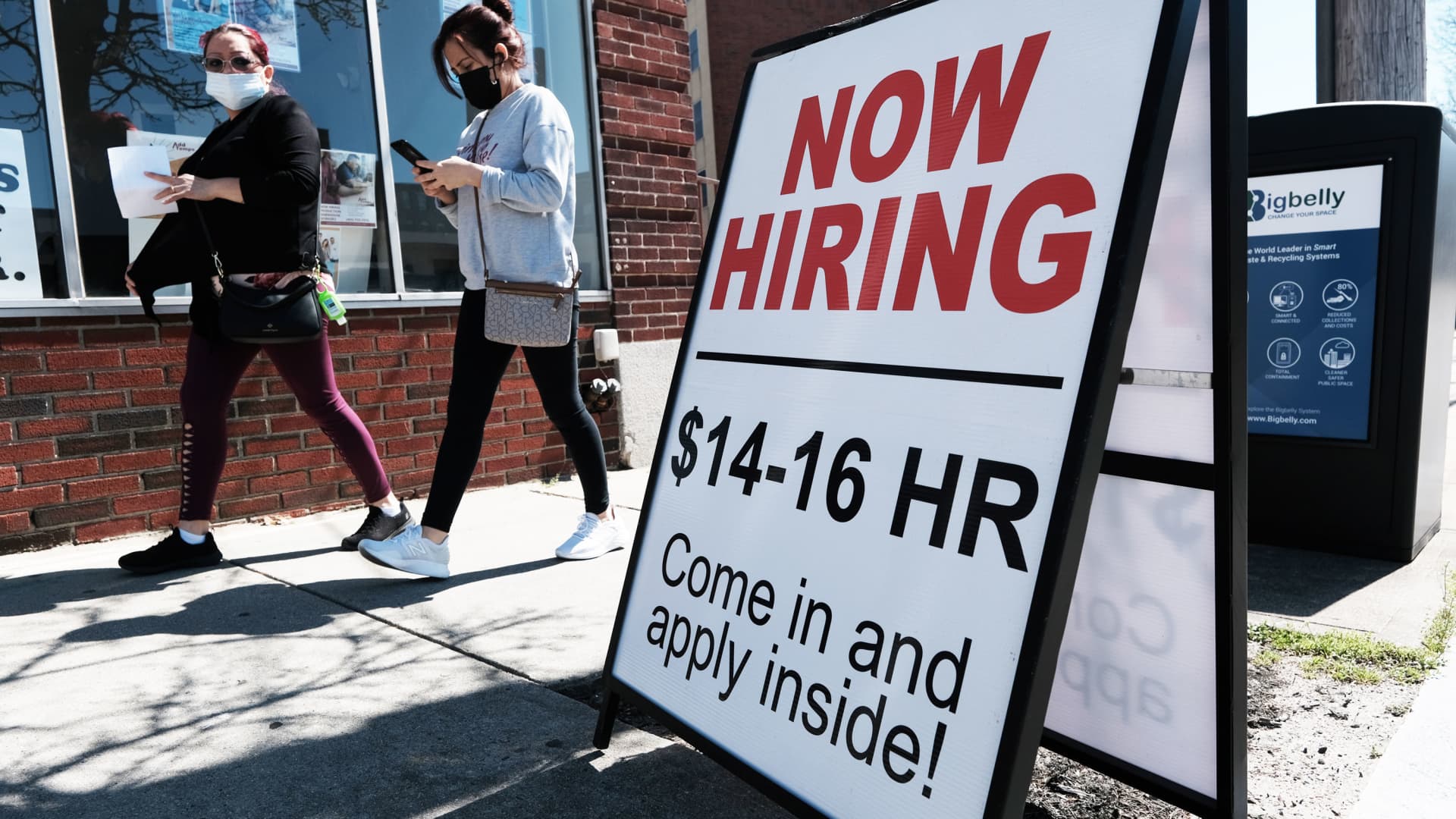
Amid soaring inflation and worries about a looming recession, the U.S. economy added slightly fewer jobs than expected in March as the labor market grew increasingly tighter.
Nonfarm payrolls expanded by 431,000 for the month, while the unemployment rate was 3.6%, the Bureau of Labor Statistics reported Friday. Economists surveyed by Dow Jones had been looking for 490,000 on payrolls and 3.7% for the jobless level.
An alternative measure of unemployment, which includes discouraged workers and those holding part-time jobs for economic reasons fell to a seasonally adjusted 6.9%, down 0.3 percentage points from the previous month.
The moves in the jobless rates came as the labor force participation rate increased one-tenth of a percentage point to 62.4%, to within 1 point of its pre-pandemic level in February 2020. The labor force grew by 418,000 workers and is now within 174,000 of the pre-pandemic state.
Average hourly earnings, a closely watched inflation metric, increased 0.4% on the month, in line with expectations. On a 12-month basis, pay increased nearly 5.6%, just above the estimate. The average work week, which figures into productivity, edged down by 0.1 hour to 34.6 hours.
“All in all, nothing shocking about this report. There was nothing that was really surprising,” said Simona Mocuta, chief economist at State Street Global Advisors. “Even if this report came in at zero, I would still say this is a very healthy labor market.”
As has been the case through much of the pandemic era, leisure and hospitality led job creation with a gain of 112,000.
Professional and business services contributed 102,000 to the total, while retail was up 49,000 and manufacturing added 38,000. Other sectors reporting gains included social assistance (25,000), construction (19,000) and financial activities (16,000).
The survey of households painted an even more optimistic picture, showing a total employment gain of 736,000. That brought the total employment level within 408,000 of where it stood pre-pandemic.
Revisions from prior months also were strong. January’s total rose 23,000 to 504,000, while February was revised up to 750,000 compared to the initial count of 678,000. For the first quarter, job growth totaled 1.685 million, an average of nearly 562,000.
The numbers come with the economy at a critical juncture in its pandemic recovery phase. Though hiring on the top line has been strong, there remains a gap of about 5 million more job openings than available workers.
Growth as measured by gross domestic product is expected to be minimal in the first quarter. An inventory rebuild last year that helped propel the biggest yearly gain since 1984 is tapering, and multiple factors kept advancements in check to start 2022.
The biggest attention-getter has been inflation, running at its fastest pace since the early 1980s and helping constrain consumer spending as wage gains haven’t been able to keep up with prices. At the same time, the war in Ukraine has dampened sentiment and added to supply chain issues. And rising interest rates are showing signs of slowing the red-hot housing market.
To combat inflation, the Federal Reserve is planning a series of interest rate hikes that further would slow growth.
Markets now are anticipating rate increases at each of the six remaining Fed meetings this year, likely starting with a half-percentage-point move in May and continuing to total 2.5 percentage points before 2022 comes to a close.
There was little in Friday’s report that would alter that outlook.
“The wage picture is critical,” said Mocuta, the State Street economist. “The report doesn’t really change the short-term trajectory, the idea that we’re going to get a few hikes in a row. If indeed you get confirmation that the wage growth is slowing at the margins, that maybe allows the Fed to reassess.”
This is breaking news. Please check back here for updates.





